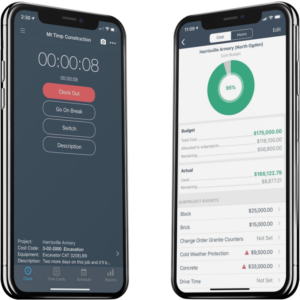
Business owners are generally aware of their obligation to pay the minimum wage. However, when they secure a contract with the federal or state government, they also need to be knowledgeable about prevailing wages.
Table of Contents
Prevailing wages refer to the rates of pay and benefits established by the Department of Labor (DOL) that employers with government contracts or foreign workers are obligated to provide to their employees.
What is a prevailing wage project?
Prevailing wage projects are construction projects subject to government-mandated wage and benefit rates for workers. These projects are typically funded by government agencies such as state or federal departments.
One example of a historic prevailing wage project is the construction of the Empire State Building in New York City in the early 1930s. The Empire State Building was built as a public works project, so the workers were required to be paid the prevailing wage rate for the New York City area at that time.
During the construction of the Empire State Building, thousands of workers were employed to build what was then the tallest building in the world. They worked under challenging conditions, including long hours and dangerous working conditions. Still, they were paid the prevailing wage rate for their work, which helped ensure they were fairly compensated for their labor.
The Empire State Building remains one of the most iconic structures in the world, and its construction was an essential event in the history of New York City and the United States. The use of prevailing wage laws to ensure that the workers were paid a fair wage played an important role in successfully completing the project.
Determining prevailing wage rates
A government agency, such as the United States Department of Labor or the State labor department, usually determines prevailing wage rates. These agencies will survey local employers in the same type of work and in the same geographic area to determine the average wage and benefit rate for specific occupations. The rates are then used as a benchmark for prevailing wage projects.
To determine the prevailing wage for your employees, consult the Department of Labor’s (DOL) Wage Determination Online (WDOL) website. This site offers general wage determinations based on location. For some projects, this information may suffice.
However, in some cases, a more specific rate is needed. The DOL’s Wage and Hour Division will conduct a survey to determine the prevailing wage rate.
DOL wage determination survey
- Requesting a wage determination survey: The first step is to request a wage determination survey from the DOL, either through their online portal or by contacting the relevant department.
- Gathering data: Next, the employer is required to provide the DOL with data on the wages and benefits paid to their employees, along with information on the occupation and location of the work.
- Analysis of data: The DOL will analyze the data provided by the employer to determine the prevailing wage rate for the specific occupation and location.
- Issuing the wage determination: The DOL will then issue a wage determination, which includes the prevailing wage rate and any fringe benefits that must be provided to the employees working on the government contract.
- Updating the wage determination: The DOL may periodically update the wage determination to reflect changes in the labor market. Employers are required to follow the updated wage determination for the duration of the government contract.
Note: The steps involved in a DOL wage determination survey may vary depending on the specific requirements of the survey and the jurisdiction in which it is conducted. For further details regarding the survey procedure, refer to the Department of Labor’s website.
Prevailing wage laws
Prevailing wage laws are the state and federal regulations requiring contractors and subcontractors on public works projects to pay their workers a minimum hourly wage and benefits determined to be the prevailing rate.
Davis-Bacon Act
There are different prevailing wage laws and regulations depending on the jurisdiction and type of project.
In the United States, the Davis-Bacon Act is a federal law that requires contractors and subcontractors performing work on federally funded or assisted contracts over $2,000 to pay their laborers and mechanics no less than the prevailing wages and fringe benefits for corresponding classes of laborers and mechanics employed on similar projects in the area.
Prevailing wage determination by state
When it comes to federal contracts, the threshold for prevailing wage laws is set at $2,000, meaning any contract of more than this amount requires that employees be paid the appropriate wage.
However, each state has its own individual prevailing wage laws.
What is the minimum value that a state public works contract must-have for the prevailing wage law to be applicable to you? Here is a chart reflecting the prevailing wage threshold by state.

States with an “*” have multiple conditions. View this chart to understand their differences.
| State | Prevailing Wage Threshold |
| California | $1000 $25,000 (Construction Work) 15,000 for Qualifying (Alteration, Demolition, Repair, Or Maintenance) |
| Connecticut | $1,000,000 (New Construction) $100,000 (Remodeling) |
| Delaware | $500,000 (New Construction) $45,000 (Alteration, Repair, Renovation…) |
| Maryland | $500,000 (Qualifying Circumstances) |
| Minnesota | $25,000 (More Than One Trade) $2,500 (One Trade) |
| New Jersey | $2,000-$50,000 (Situational) |
| Ohio | $78,258 or $250,000 (New Construction Depending on Type of Work) $23,447 or $75,000 (Circumstantial) |
| Oregon | $50,000 (Major Renovations) $750,000 (Any Project) |
| Tennessee | $50,000 (Highway Construction) None (All Others) |
| Vermont | $100,00 or ( 50% Funded by a Capitanl Construction ACT Costing More Than $200,000) |
| Washington | $25,000 (College/Universities Construction) None (All Other) |
States without prevailing wage laws
Alabama, Arizona, Arkansas, Colorado, Florida, Georgia, Idaho, Indiana, Iowa, Kansas, Kentucky, Louisiana, Michigan, Mississippi, New Hampshire, North Carolina, North Dakota, Oklahoma, South Carolina, South Dakota, Utah, Virginia, West Virginia, and Wisconsin
Purpose of prevailing wage laws
The purpose of prevailing wage laws is to ensure that workers on government-funded projects are paid fairly and to prevent contractors from underbidding each other by cutting labor costs. This protects local workers from being underpaid and helps to maintain a higher standard of living.
Project Labor Agreement vs. Prevailing Wages
A Project Labor Agreement (PLA) is a pre-hire collective bargaining agreement with a labor organization that sets the terms and conditions for the workers on a construction project. A Prevailing Wage is the hourly wage, benefits, and overtime required to be paid to workers on public works projects as determined by the government. While a PLA may specify the prevailing wage, it also includes other terms and conditions such as work rules, grievance procedures, and no-strike clauses.
Overall cost change of a project
Generally, prevailing wage rates tend to be higher than the minimum wage. If you have new employees starting at minimum wage. Therefore, if you have new employees starting at minimum wage, this will significantly add to the overall cost of a project.
If you have an employee who typically earns $10 per hour working on a non-prevailing wage project, but then you hire him for a prevailing wage project where the rate is $18 per hour, you would have to pay him the higher wage rate of $18 per hour for hours worked on the prevailing wage project.
For example, if the employee works 40 hours a week, their pay on a non-prevailing wage project would be $400 (40 hours x $10 per hour). However, on a prevailing wage project, their pay would be $720 (40 hours x $18 per hour).
In this scenario, you would need to pay the employee an additional $320 per week for the same hours worked!
What contractors need to know
Prevailing wage projects require contractors to track labor hours and expenses to abide by all applicable laws and regulations. Therefore, contractors need to maintain accurate records of hours worked, the associated wages paid, and any other costs associated with the project.
On prevailing wage projects, employees are paid according to the wage scale determined by their particular job. This can cause their wage rate to fluctuate throughout the day. For example, an Equipment Operator’s wage could be $27.50 an hour, while a Laborer’s wage maybe $18.00 an hour. Therefore, if they switch between jobs or tasks, their rate of pay could also change.
Failure to comply with labor and expense tracking requirements can result in fines and penalties.
Luckily, construction time tracking software has made it easier for contractors to monitor their hours and work activities, ensure compliance with labor standards, and accurately track job costs and expenses.

Some even come with budget monitoring, so contractors can control their costs and better track their expenses, giving them greater visibility into their project costs and ensuring they remain within their prevailing wage budget.
In conclusion
Overall, prevailing wage projects are an essential aspect of the construction industry. They ensure that workers are paid fairly and help promote a high living standard for local communities. Therefore, contractors must be familiar with the laws and regulations surrounding prevailing wage projects to ensure they are compliant and bid on the project successfully.











